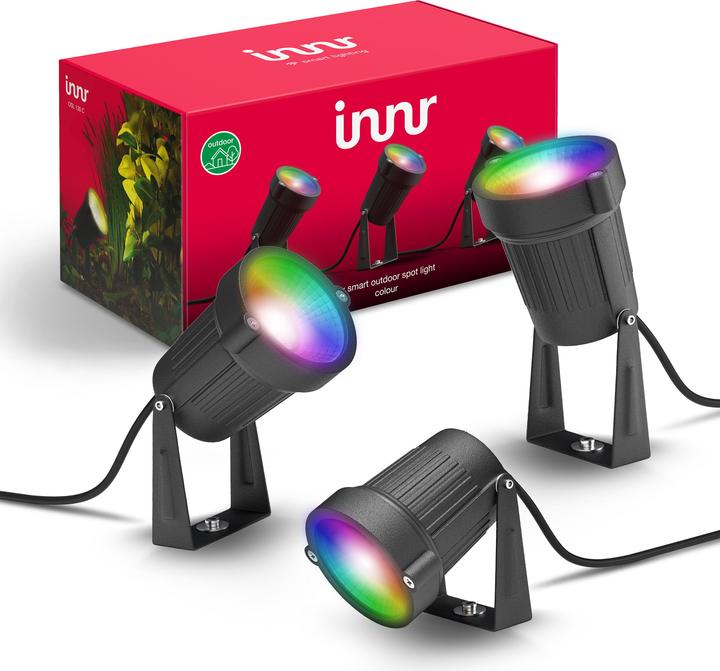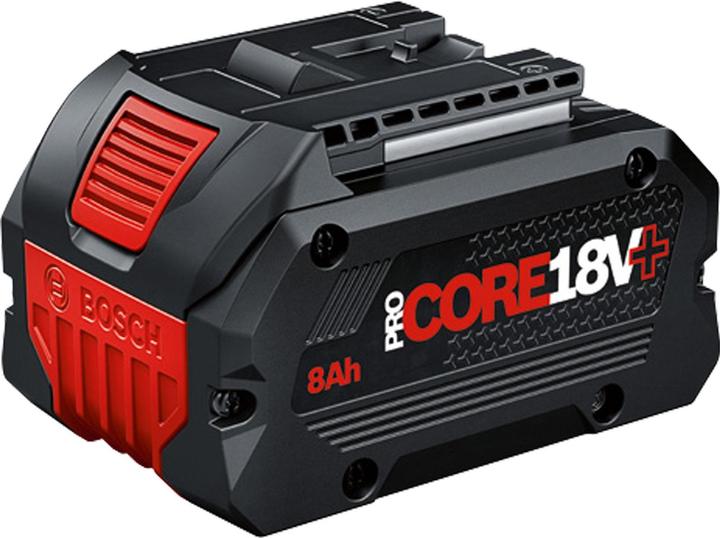
Guide
Philips Hue versus Wiz: which is the better smart light for your TV?
by Lorenz Keller

Smarthome products can automate your everyday life. And to help you navigate this jungle of providers, allow me to introduce you to the most common systems. Following Homematic IP, it's Philips Hue's turn now.
The one big drawback with Philips Hue lies in pricing. The products look classy, are well manufactured and usually work without problems. Installation couldn't be simpler. A big plus, especially when it involves complex smart home environments. Nevertheless, lights and other products from Philips Hue are too expensive for my taste. The high entry costs are also the only reason why my apartment isn't (yet) stuffed to the brim with these things.
When I'm not stuffing my face with sweets, you'll catch me running around in the gym hall. I’m a passionate floorball player and coach. On rainy days, I tinker with my homebuilt PCs, robots or other gadgets. Music is always my trusted companion. I also enjoy tackling hilly terrain on my road bike and criss-crossing the country on my cross-country skis.
Practical solutions for everyday problems with technology, household hacks and much more.
Show allLamps that respond to your movements, turn on when you enter a room and turn off when you leave it again. Backlighting that matches the colours seen on your TV or computer. Or light routines that simulate sunrise throughout your home and allow you to wake up serenely. Smart lighting systems are nearly limitless. Everything interacts, all networked to accompany your daily routine. Getting started can be challenging with all the possibilities at your disposal. To help you find out which system is right for you and what you have to pay attention to, here are various providers and their products in detail. In the second part I'll introduce you to Philips Hue.
For many, Philips Hue serves as the perfect introduction to the smarthome universe. Lamps that change colour at the touch of a button and can be controlled simply via an app . Sounds temptingly basic for beginners. After purchasing your first products, you'll realise how simple the Philips Hue system actually is. In addition, many of the bulbs offer over 16 million colours, giving you endless lighting possibilities. Philips Hue is the ultimate gateway drug when it comes to experimenting with smart home products and lights. In addition, some Philips Hue lamps aren't just bland light sources, but stylishly-designed decorations as well.

You don't need an electrician or any other skilled worker to install Philips Hue products. Two options are available to you: the «half smart» BT line and the «normal» Hue, the one most of you will be familiar with. The former works via Bluetooth, the latter using a bridge. More on that later. The hardest thing you'll have to do is attach switches or lights, turn light bulbs in or out and click around the app a bit. Depending on the product and mounting location, drilling and screwing might be necessary, but even that is more than manageable to most. That's what makes it so appealing. The lights are quickly mounted, set up and ready for use. You can also control each one separately or all together. A living room disco, a sea of lights in your garden or light strips in the garage – have it just as you like it. From a gaming setup to a romantic oasis of tranquillity, everything is conceivable and quickly implemented.
Every Hue setup includes a base station. You connect it to your router by cable. Even with Philips Hue, you'll need to be online to get absolutely all the features. Depending on the installation, you can still operate the lamps manually via a switch, but you're powerless if the app won't connect. In addition, an Internet connection is absolutely necessary for setup. The Bridge – as Philips calls the Hue lighting system's control centre – is relatively small, you can easily hide it behind furniture or a lamp. What bothers me personally is the fact that the blue light ring and the three small status LEDs on the bridge can't be deactivated. The lamps of the base station itself are probably the only ones in the whole Hue universe that you can't control.

You can then use the base station to control any Philips Hue product. Meanwhile, several other manufacturers also offer products that are compatible with Hue. Devices by Innr, Paulmann or Sunricher, for example, also use the Zigbee communication protocol on which Philips Hue is based. You can expand your smart lighting system with numerous components and set up a smart home step by step. Replace existing light bulbs, install new floor, wall or ceiling lamps, use motion detectors or switches, install LED strips, add Ambilight to your computer or TV and even control other devices via a Philips Hue socket. Thanks to a variety of outdoor products, Hue possibilities aren't limited to indoor use.
Looking to replace your old light bulbs with smart ones that you can light up in all possible colours and control via an app? Or do you want to retrofit your old TV without Ambilight? Then Philips Hue is the right brand for you. Even if you need an additional lamp somewhere and want to switch it on and off easily with a switch that you don't have to manually attach. For example, I fixed a lighting problem in my kitchen – first with light strips, then using Philips Hue Play. I combined the whole thing with a compatible smart light control switch from Feller. The same would have been possible with the switches from Philips Hue. But they don't match the design of my interior.
You can also control all Philips Hue products with popular voice assistants such as Apple's Siri, Amazon's Alexa or Google's Assistant. Microsoft's Cortana, Samsung's Bixby or IFTTT are also compatible. Motion detectors, light switches and outdoor lights can also spice up the space around your home and make it light up brighter than any football stadium. Philips Hue even offers light strips suitable for outdoor use. In addition to app control, many products can also be operated manually via smart switches, sockets or directly on the device itself. So there's no need to fear a blackout if your internet goes down.


If you're looking for a cheaper yet similar lighting solution, I can recommend Eglo Connect. Our colleague Michael recently subjected the system to a direct comparison with Philips Hue. The smarthome lights did surprisingly well, convincing him that they're an alternative for people who don't want to install a bridge on top of all the new bulbs. The whole thing is kept a bit simpler than Philips Hue, but can still keep up with the industry's best in terms of functions, colours and connectivity. In addition, you don't need a router or Internet for the Eglo solution. Ideal for a holiday or second home if you've got the money. Regrettably you can only control the lighting within your own four walls via Bluetooth.

Another alternative is Innr. Philips' Dutch neighbours have also developed a smart lighting system. By the way, it's compatible with Philips Hue – or with Ledvance, another competitor. But it can also be operated with its very own bridge. Innr offers mainly white lamps, but has now expanded its range to include some coloured lamps. As with Hue, scenes can be created or schedules defined to match and control up to 50 lights. Paulmann also offers smart light sources. LifX has convinced Michael as well. Do you know any other alternatives to Philips Hue? Then let me know in the comments.



Innr Smart Flex strip FL 140 C
RGBW, Neutral White, Cold White, Warm white, 400 cm, Indoor

Philips Hue is an easy way to take your first steps in the smarthome universe. Even though the products are primarily limited to light bulbs, light strips and lamps, they're compatible with many other systems. This way you can gradually make your home smarter and expand it with components that go beyond lighting. You control all your Philips Hue products through the app, directly through the product or a switch. I also appreciate the automatic lighting on depending on when the sun sets. This way you also get a simple alarm system and don't have to program new switch-on and switch-off times consistently. From simple on and off switching to dimming and a sunrise imitated by lamps, everything is possible. Although there's a price to pay, I don't want to part with my Philips Hue lights anymore.

Homematic IP offers easy entry into the smart home universe – from automated roller shutters to smart weather stations. Philips Hue works in a similarly simple way, with the focus here being on lighting. In the next part of my smarthome introduction I'll take a closer look at the smart indoor climate system Tado . If you want to join me on my mission and don't want to miss any smart home articles, follow me by clicking on the «Follow author» button on my profile.

Bosch Professional Zubehör GBA ProCORE 8 Ah 18V+
18 V